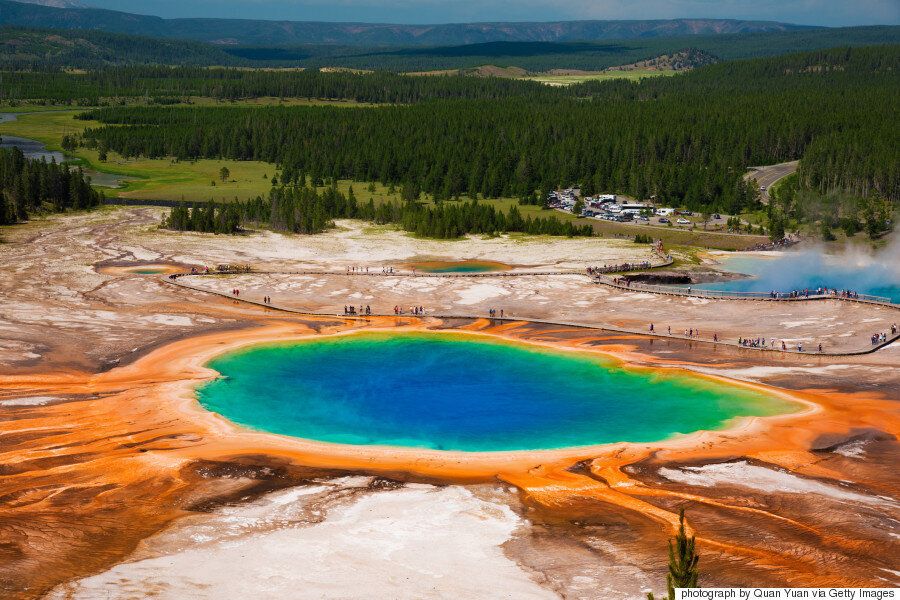After nearly 40 minutes of discussing super volcanoes with one of the world's most learned experts on the subject you're left with the overwhelming belief that putting a paper bag over our heads for the next 25,000 years and singing 'kumbaya' is pretty much our best strategy as a species.
Actually, that may no longer be necessary.
No, you can't tame volcanoes. They shape the world, and they shape us. But in trying regularly to kill us, they also force us to adapt, invent, and perhaps even inspire ourselves out of disaster.
The last major super eruption caused some of the 19th century's most beautiful art, while its removal of horse feed from the ecosystem might have inadvertently led to the invention of the bicycle.
And the prospect of the next one is leading us to new research that might just save us as a species.
What Is A Super Volcano?
The term super volcano is a loose one; at present it simply describes a massive volcanic eruption that -- while devastating in a localised sense -- can quickly escalate into being an extinction-level event for humanity as a whole.
How? Ash. Super volcanoes put out vast quantities of the stuff into the atmosphere. It can result in a global five degree drop in temperature which in the best case scenario would give us a decade of permanent winter. The worst? It could be the start of a new ice age. This isn't theory. It's happened before, and it will happen again.
It seems an odd concept to have so little an understanding about something so significant, but until very recently that's precisely the place we were in; we simply didn't know enough about how they were formed. That all changed in January 2014 however when Professor Luca Caricchi and his team at the University of Geneva published a paper on the mechanics of these enormous eruptions finally giving us a recipe for how to make a super volcano.
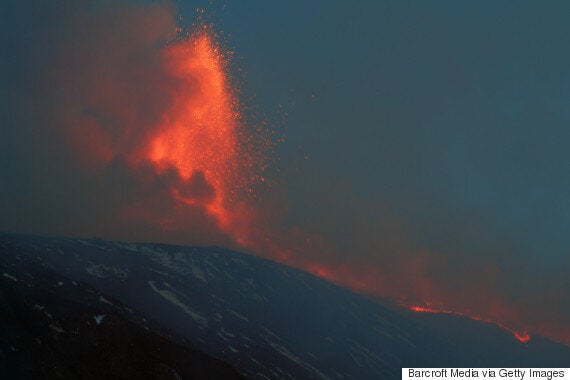
To help understand what we've newly learnt Dr Oppenheimer uses an analogy, one that involves balloons.
"Smaller eruptions are triggered because of excess pressure that develops in those chambers, so they’re repeatedly supplied with magma, and that’s because the rocks are elastic, so it’s like blowing up a balloon and eventually the balloon will pop."
Curicchi found that when looking at super eruptions however, the rock types were very different.
"What they said about the very large chambers is that they’ve been sat around for so long that the wall rocks surrounding them are much warmer, and they tend not to pop like a balloon pops, the balloon just keeps getting larger and larger."
"With the smaller size eruptions the balloon plastic is really quite brittle and breaks more easily, however when you’ve got a very large chamber it’s heating up the surrounding rocks so it’s like it's made of a much more flexible rubber, so you can keep blowing it up further and further. In that respect then it’s not adding more and more magma and then having an overpressure it’s that eventually that magma is just too buoyant to hold down anymore. A bit like holding a ping pong ball under water and letting it go."
Of course in real world terminology, that ping pong ball is around the size of Yellowstone National Park and would herald a winter that could last for decades.
Remarkably, Dr Clive Oppenheimer seems... calm about the whole thing, "I suppose as a geologist you’re very much taking the long view on things," he said.
That 'long view' is around 25,000 years. Nothing compared to the life cycle of our planet, but to a human being like you and me, it's terrifyingly explicit. And it begs the question: If we're not due another super volcano eruption for 25,000 years, why are we worrying about it now?
"Events of that size on average are occurring every 50-100,000 years so there definitely will be one in the future. We can’t say when [however] because they don’t happen exactly every 50,000 years, you could have two in a row or it’d be a bit like waiting for the 26 bus. On a century timescale, it’s not a zero possibility."
On a century scale, it's not a zero possibility.
If you want to see an example of just how devastating these things can be then you only have to look back to 1815. That was when Mount Tambora erupted on the island of Sumbawa in Indonesia. The eruption completely obliterated what had been a perfectly straightforward mountain, creating an explosion that could be heard over 1,200km away. It threw up what is estimated to be 12 cubic miles of gas, rock and dust. The aftermath of this was a death toll of around 71,000 with nearly 10,000 people being killed instantly.
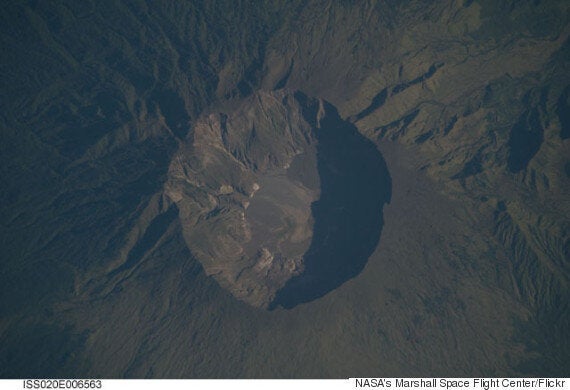
The effect of Mount Tambora on the rest of the planet was substantial. 1816 became known as 'The Year Without A Summer' as North America and much of Northern Europe suffered from the phenomenon known as a 'volcanic winter' which, among other things, led to both some of JW Turner's most beautiful paintings and the invention of the bicycle.
Thankfully, though, the worldwide perception of super volcanoes is changing. Technological breakthroughs are beginning to address some of the key questions we have such as: can we predict super volcanic eruptions? How do we monitor them once they begin erupting? And how can we survive their potentially global effects?
Predicting The Inevitable
Now we have a rough picture of how super volcanoes are formed, the next step is finding an accurate way of predicting when they'll erupt. Dr Oppenheimer is confident that a technology called LIDAR can help answer that question.
"LIDAR I think has got the potential to be very exciting in volcanology and laser spectroscopy and there have been a number of pilot studies in that area for the last 10-15 years but no one's really taken it to the next level."
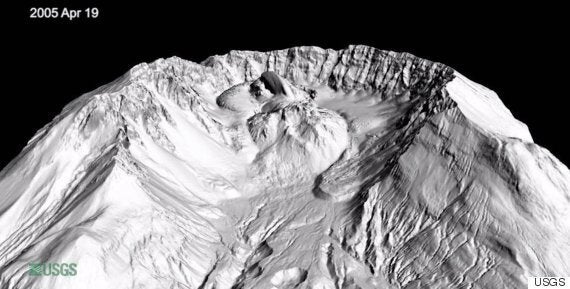
LIDAR or Light Detection and Ranging is a geographical mapping technique that has most recently been causing a stir by discovering ancient civilisations in rainforests. Able to cut through vegetation, the sensor can create a highly accurate picture of the surface. In the early 00's it was used to monitor the after-effects of the Mount St Helens eruption.
It's also incredibly good at measuring ash cloud movements, with satellite based systems and aircraft mounted sensors LIDAR's initially static picture-taking potential has transformed towards it being an essential weapon in monitoring the tiniest changes in landscape.
The Silent Watchman
Once you have a rough idea of when a super volcano is going to go pop, you need to know what's going to happen next.
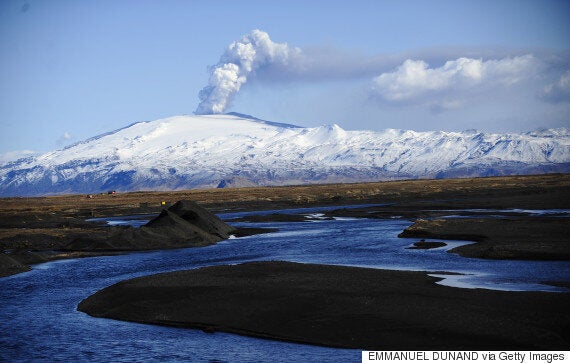
In 2010 Iceland's Eyjafjallajokull volcano decided to make a life decision. It realised that while it was all very well and good to look imposing, most of its reputation was simply built on hearsay, and frankly this could not stand. The resulting tantrum not only made Eyjafjallajokull feel much better (if a volcano could have feelings) but it also meant that Europe's aerospace became completely off-limits, costing EU business around £2.15bn and grounding hundreds of thousands of passengers. As Oppenheimer points out, this theatrical eruption turned out to be an opportunity missed.
"If you think about the Eyjafjallajokull eruption one of the things people wanted to know was how much ash is in the atmosphere but because flights were grounded there wasn’t really a lot of scope for going up and finding out how dangerous it was with manned aircraft."
Since then however, one aircraft has skyrocketed in into the public sphere as a scientific weapon or as a way of filming your dog on the beach. I am of course referring to the drone.
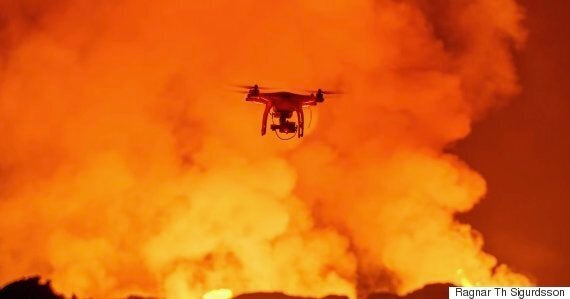
Leading drone manufacturer DJI recently took a range of its drones to Iceland to film the Holuhraun lava field, and found that while the GoPro they were using suffered quite considerably under the strains of filming (it melted), the drone itself however performed admirably.
While their current setup was enough to ensure a successful flight Eric Cheng DJI director of aerial imaging, found that every time he took the drone up close the wireless signal started to collapse. It's still not clear why that is, and already it's a hurdle that DJI are looking at overcoming.
The flight had however served as a benchmark. Drones could legitimately be used as delivery vehicles for testing equipment and for monitoring live eruptions. As they become more developed with increased flying times and load limits, scientists will be able to attach gas sensors, infrared imaging cameras and more.
Going Underground
It's not enough to see what's happening above ground, to truly understand how a super volcano will erupt researchers are calling in the help of NASA to get a clearer picture of what's happening below our feet.
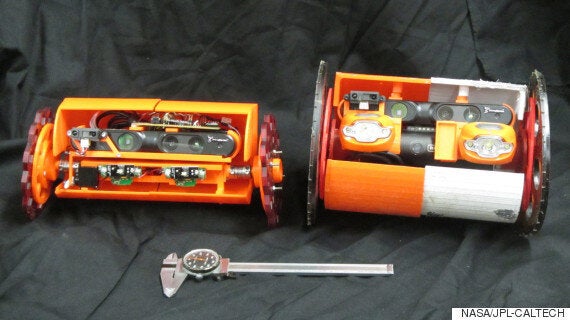
Carolyn Parcheta is a NASA postdoctoral fellow based at NASA's Jet Propulsion Laboratory in Pasadena, California and has -- along with JPL robotics researcher Aaron Parness -- been working on the next-generation of robots to help clarify some of the unanswered questions surrounding the eruptions themselves.
"We don't know exactly how volcanoes erupt. We have models but they are all very, very simplified. This project aims to help make those models more realistic," says Carolyn.
Called VolcanoBot 1, this tiny two-wheeled explorer has spent the last year exploring the lava tubes in the Kilauea volcano in Hawaii. With 3D sensors and cameras, the robot is able to create an as yet unseen 3D map of the lava tunnels that form when a volcano erupts.
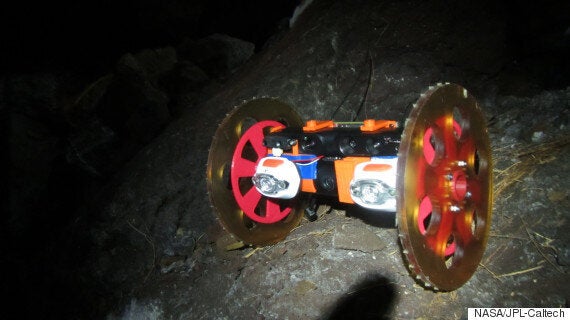
Parcheta is understandably excited about what this project could eventually mean.
"In order to eventually understand how to predict eruptions and conduct hazard assessments, we need to understand how the magma is coming out of the ground. This is the first time we have been able to measure it directly, from the inside, to centimetre-scale accuracy,"
While it's tempting to stay focused on what's here and around us, Parness points out that the team are working on a much larger scale than simply Earth.
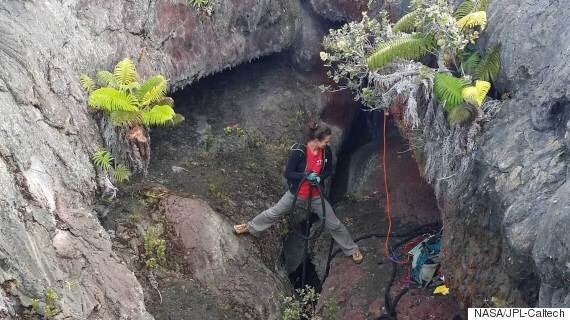
"In the last few years, NASA spacecraft have sent back incredible pictures of caves, fissures and what look like volcanic vents on Mars and the moon. We don't have the technology yet to explore them, but they are so tantalizing! Working with Carolyn, we're trying to bridge that gap using volcanoes here on Earth for practice. We're learning about how volcanoes erupt here on Earth, too, and that has a lot of benefits in its own right,"
Green Fingers
Answering the question of survival is the field of biology. If you want to see first hand the effects that a super volcano would have on the world then simply look around you. Over decades and decades, climate change is changing our world in much the same way a super volcano would.
Dr Oppenheimer recently published a paper that outlines the most recent understanding of super volcano effects and outside of the 100km radius of magma the biggest change will be the climate. An eruption would send millions of cubic kilometres of ash into the atmosphere, creating a global rainfall deficit and worldwide cooling of around five degrees.
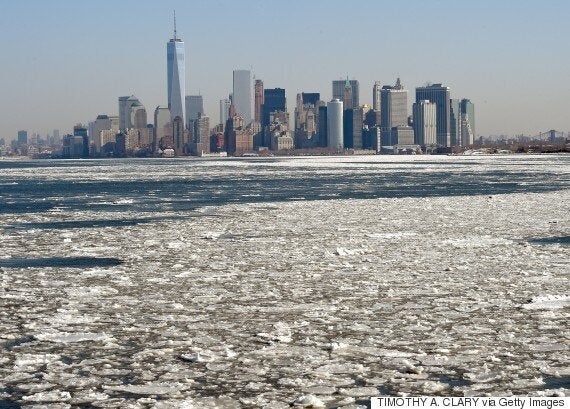
That's an enormous amount. In over a century our planet has warmed by just 1.53 degrees and the changes have already been huge. Imagine turning back the clock by a hundred years, adding a frankly unfathomable amount of snow and you'll have some idea of the stresses global agriculture would be under.
The good news is that as a species we're already preparing -- albeit slowly -- for global climate change. The mass agricultural models that have sustained us for the last 100 years are no longer looking as practical. As the world warms and the population increases we've started looking for small sustainable alternatives. Farmers in China have started experimenting with rice paddies by integrating duck and fish farms. The ducks act as pest control for the rice while the fish decrease the methane that the rice paddies produce.
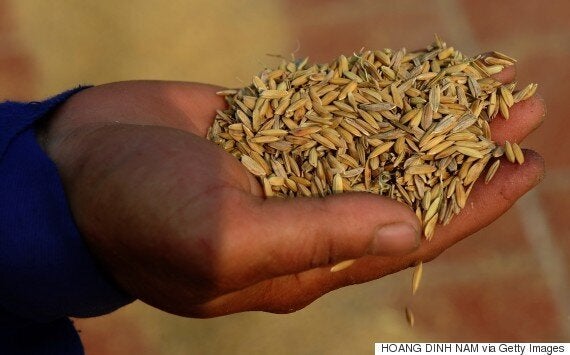
By integrating these models together we're creating more robust solutions, a robustness that would almost certainly be needed should the mercury start to plummet.
While that case study seemingly rejects technology, the fact remains that technology is going to have a huge impact in helping our understanding of these silent giants.
While it's still not clear exactly how a super volcano would erupt, one of the assumed theories is that it'll consist of a number of smaller more conventional eruptions happening over a long period. So of course the only way to study that, is to study the normal volcanic eruptions we see all the time. To do that, you only need to go back five years.
"Good Old Petrology"
Rather frustratingly it seems as though all of these technological innovations mean nothing without "good old petrology" or put simply, the study of rocks.
"There's been huge advances in the analysis of geological materials. So it’s now possible to make measurements at [an] incredibly small scale using energy sources. One of my students has done some really nice work using the Diamond Light Source Synchrotron. That kind of technology applied to geology is also really yielding some really fascinating insights into volcanoes and how they work."
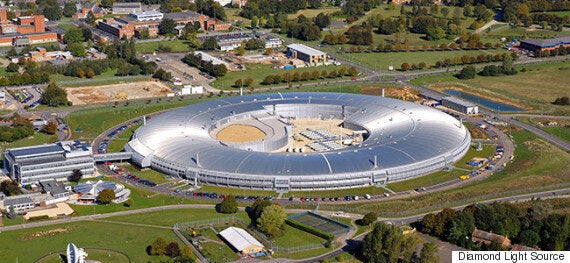
The Diamond Light Source is an astonishing building located rather unassumingly off the A34 to Oxford. Despite these humble surroundings it is quite simply one of the most advanced buildings in the UK.
Accelerating electrons to near light speeds, the resulting light is 10 billion times brighter than our own Sun. This light is then split, and fed off into laboratories through 'beamlines' where a microscope that's 10,000 times more powerful than anything you'll find in a school lab can be utilised. Using this astonishing resource, geologists have been able to anaylse rocks samples in way that has never been possible before.
The Good News
Oddly, after examining all the different technologies that are being employed, it seems as though the simplest is going to be the most useful. Looking at rock, through a microscope.
The fact remains that actually we're doing pretty well. Technology is helping us explore them more than ever, the work humanity is doing with global climate change is making us more adaptable. In the time scales that we're looking at before the next eruption, there's almost no knowing how technologically advanced we'll have become.
